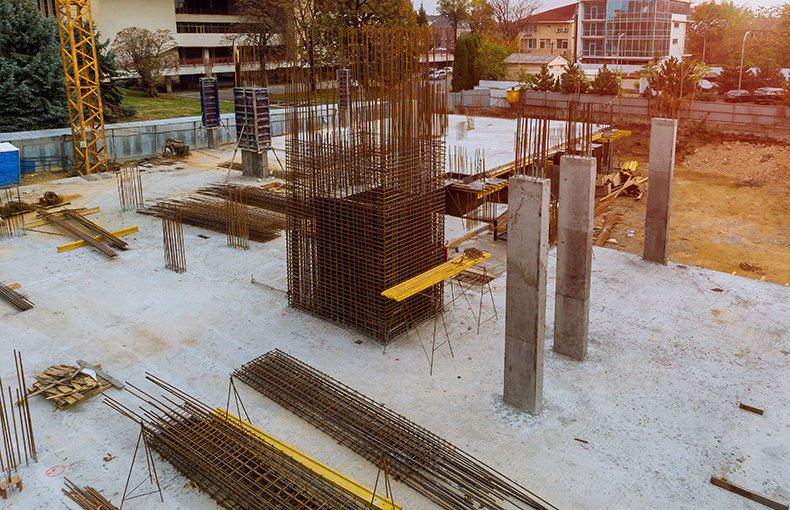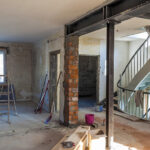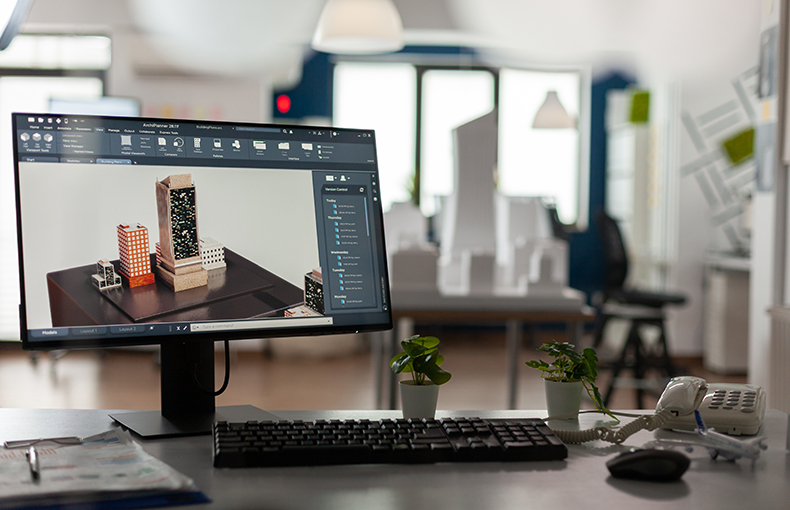Common Construction Mistakes and How to Avoid Them
Table of Contents
- Introduction
- Inadequate Planning and Design
- Poor Site Preparation
- Unclear Communication Between Stakeholders
- Ignoring Safety Protocols
- Subpar Materials
- Not Adhering to Building Codes and Regulations
- Underestimating the Importance of Inspections
- Rushing the Construction Process
- Lack of Contingency Planning
- Conclusion
When embarking on a construction project, whether it’s residential, commercial, or industrial, the goal is to achieve a high-quality structure that stands the test of time. However, despite the best planning and effort, construction projects often face hurdles, many of which can be traced back to common mistakes. These mistakes can lead to delays, cost overruns, and structural issues. Fortunately, with the right approach and attention to detail, many of these problems can be avoided.
As a team at Hothico Architects, with years of experience in the architecture and construction field, we have come across a variety of challenges and issues during construction projects. In this blog post, we’ll outline some of the most common mistakes that occur in construction and provide practical advice on how to avoid them. Let’s dive in!
Inadequate Planning and Design
One of the most significant mistakes in construction is starting a project without sufficient planning and design. Some projects jump into construction with only a rough idea of the final product, which can lead to poor execution and mistakes down the line. Construction is an intricate process that involves coordination between multiple stakeholders, and without a clear roadmap, it’s easy to miss crucial details.
How to Avoid It: Proper planning begins with detailed design work. At Hothico Architects, we stress the importance of creating a comprehensive and well-thought-out design before construction starts. This includes working with a qualified architect, ensuring that all permits and legal documents are in order, and planning the construction phases meticulously. Detailed drawings, blueprints, and 3D models can help guide the project from start to finish, ensuring that everyone involved is on the same page.
Additionally, the design should consider the long-term usability of the building. This means thinking about how the space will be used, considering future growth, and making sure that it aligns with the client’s needs. Good design prevents the need for costly changes and fixes later on.
Poor Site Preparation
Preparing the construction site is a vital step in the building process. Unfortunately, many projects rush this phase, thinking it’s a simple task. Failing to properly assess the site conditions, like soil stability, drainage, and terrain, can cause significant issues during construction. Poor site preparation can lead to uneven foundations, drainage problems, and structural failure down the line.
How to Avoid It: Before construction begins, make sure the site is properly assessed by an expert. Soil testing is a critical part of this process, as it helps determine the type of foundation required for the structure. Hothico Architects ensures that site conditions are thoroughly reviewed before beginning any project. If there are any concerns about the ground’s suitability for construction, it’s better to address them early on rather than risk structural damage later.
Proper grading is also crucial. The land should slope away from the building to avoid water pooling near the foundation. Drainage systems should be installed where necessary to prevent flooding.
Unclear Communication Between Stakeholders
Construction projects involve a range of people: architects, contractors, engineers, and sometimes multiple subcontractors. Poor communication between these stakeholders can result in misunderstandings, mistakes, and delays. The lack of a clear communication system often leads to errors in execution and even legal disputes in some cases.
How to Avoid It: Clear communication is key. At Hothico Architects, we make it a priority to maintain open and constant communication between all stakeholders. This includes holding regular meetings, providing written updates, and making sure that all instructions are clear and documented.
A communication plan should be established at the start of the project. This plan should define the roles and responsibilities of each party, as well as the preferred methods of communication. Utilizing project management software or platforms can also help streamline communication and keep everyone on track.
Ignoring Safety Protocols
Construction sites can be dangerous, and safety should always be a top priority. Ignoring safety protocols can lead to accidents, injuries, and even fatalities. Construction companies must adhere to local building codes and safety regulations, but even so, accidents can still happen if safety is not taken seriously from the outset.
How to Avoid It: Make sure that all workers and contractors are fully trained in safety procedures. All personnel should be provided with the necessary safety equipment, including helmets, gloves, and harnesses. Regular safety audits and inspections should be performed to identify potential hazards before they result in accidents. It’s also important to establish clear emergency procedures and ensure that workers are aware of them.
At Hothico Architects, safety is a priority in every project we undertake. We work closely with our contractors and subcontractors to ensure that safety measures are in place from day one, helping to minimize risks and avoid costly delays.
Subpar Materials
Using substandard or inappropriate materials is a mistake that can compromise the safety and longevity of a building. Whether it’s cheap concrete, low-quality paint, or poor insulation, using inferior materials can lead to a host of problems, including structural issues, high maintenance costs, and reduced energy efficiency.
How to Avoid It: Investing in quality materials is essential. While they may cost more upfront, using high-quality, durable materials will save money in the long run by reducing maintenance and repair costs. Make sure to source materials from reputable suppliers who provide warranties and certifications.
At Hothico Architects, we work with trusted suppliers who provide quality materials. We understand that the right materials make a significant difference in the final product, and we ensure that all construction components meet the necessary standards for safety and performance.
Not Adhering to Building Codes and Regulations
Building codes and regulations exist to ensure that structures are safe and functional. Failing to comply with these codes can result in penalties, delays, and even the need to redo portions of the construction. While it may be tempting to cut corners to save time or money, not following the codes is never worth the risk.
How to Avoid It: Before construction begins, familiarize yourself with the local building codes and regulations. This includes zoning laws, structural requirements, fire safety, electrical standards, and more. Working with an experienced architect and contractor who is knowledgeable about local codes is crucial to avoiding costly mistakes.
At Hothico Architects, we ensure that every project we take on complies with the relevant building codes. We prioritize safety and legal compliance, so our clients don’t face issues later on.
Underestimating the Importance of Inspections
Many construction projects fail because they don’t undergo proper inspections at various stages of the build. Whether it’s a foundation inspection, an electrical check, or a plumbing inspection, skipping these reviews can result in issues that are costly and time-consuming to fix.
How to Avoid It: Schedule regular inspections throughout the construction process. These inspections should take place at key stages to catch any potential problems early on. It’s important to hire certified inspectors who know what to look for and can offer expert advice on how to correct any issues.
Hothico Architects advocates for thorough inspections at every phase of construction. We work with certified inspectors to ensure that each element of the project meets the highest standards before moving on to the next stage.
Rushing the Construction Process
In construction, time is money, but rushing through the process to meet tight deadlines can lead to mistakes. It’s tempting to push workers and contractors to speed things up, but this often results in sloppy work that must be fixed later. Rushed construction can also increase the likelihood of accidents on site.
How to Avoid It: Set realistic timelines and budgets for the project. While it’s important to stay on schedule, don’t sacrifice quality for speed. Build in some buffer time for unforeseen delays, and make sure that all workers and contractors have adequate time to complete their tasks to the highest standard.
At Hothico Architects, we understand the importance of balancing efficiency with quality. We carefully plan our projects and ensure that enough time is allocated for each phase, avoiding the temptation to rush the process.
Lack of Contingency Planning
Construction projects are complex, and things don’t always go according to plan. Whether it’s an unexpected weather event, supply chain delays, or unanticipated site issues, the lack of contingency planning can throw a project off course.
How to Avoid It: Always prepare for the unexpected by having a contingency plan in place. This plan should outline potential risks and outline how to mitigate them. It’s also wise to set aside additional funds in the budget to handle any unforeseen costs.
Hothico Architects helps clients create comprehensive contingency plans that account for various risks. We ensure that our projects have flexibility built in, so we’re able to handle challenges as they arise without compromising the project’s success.
Conclusion
Construction is a challenging but rewarding process that requires careful planning, attention to detail, and a commitment to quality. By understanding and avoiding common mistakes, you can ensure that your project runs smoothly, stays on budget, and meets your expectations.
At Hothico Architects, we strive to deliver exceptional architectural solutions that are both functional and sustainable. We understand the complexities of construction, and we work closely with our clients to avoid these mistakes, creating buildings that are built to last.
By being proactive, paying attention to details, and working with experienced professionals, you can avoid the common pitfalls that many construction projects face. Whether you’re building a home, office, or commercial space, taking these steps will help you achieve a successful outcome.











